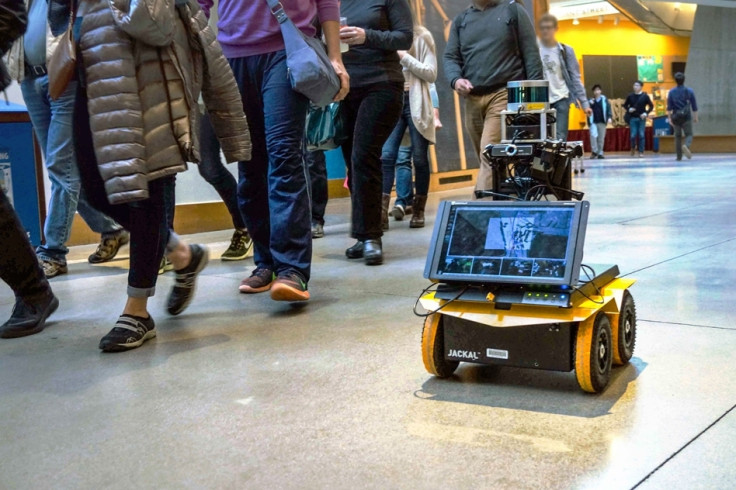MIT's new 'socially aware' robot can move swiftly through crowds
The robot adjusts its path every tenth of a second to maintain a safe 'walking speed' of 1.2m per second.

MIT researchers have developed a new 'socially aware' robot, which navigates through busy pedestrian environments without bumping into people walking back and forth.
The bot, which the institute says "resembles a knee-high kiosk on wheels", uses a slew of cameras and sensors to move through crowds. Its system analyses the surrounding environment in real-time and adjusts its path every tenth of a second to maintain a safe 'walking speed' of 1.2m per second.
The robot not only prioritises humans and stays out of their way, but also follows a socially aware navigation approach to obey the unsaid laws of pedestrian commute such as things like overtaking from the correct side (depending on the country) or leaving sufficient space while moving ahead of someone.
"Socially aware navigation is a central capability for mobile robots operating in environments that require frequent interactions with pedestrians," says lead researcher Yu Fan Chen. "For instance, small robots could operate on sidewalks for package and food delivery. Similarly, personal mobility devices could transport people in large, crowded spaces, such as shopping malls, airports, and hospitals."
During a field test at MIT's facility, it passed with flying colours, demonstrating an appropriate approach to navigate without colliding or stopping to replan its route. The system maintained a steady pace and also prompted the bot to stop to avoid a tour group perfectly.
How does it tackle unpredictability of human movement?
Machines can easily avoid predictable or stationary obstacles, but when it comes to humans, who are both non-stationary and non-predictable, not many have been successful at planning their route.
"The part of the field that we thought we needed to innovate on was motion planning," says Michael Everett, a member of the team that worked on the project. "Once you figure out where you are in the world, and know how to follow trajectories, which trajectories should you be following?"
The solution for this problem (pedestrians who could change their directions any time) came with the implementation of reinforcement learning, a form of machine learning where instead of being fed with commands, machines follow a trial and error approach to learn.
The researchers created a computer-simulated environment to train their bot, allowing it to learn how to navigate and react on a busy street or corridor. Now, they plan to take this approach ahead by training their robot to handle even larger groups of people. Everett added: "There may be a social rule of, 'Don't move through people, don't split people up, treat them as one mass.' That's something we're looking at in the future."
Here's a video of MIT's 'socially aware' robot in action:
© Copyright IBTimes 2025. All rights reserved.





















